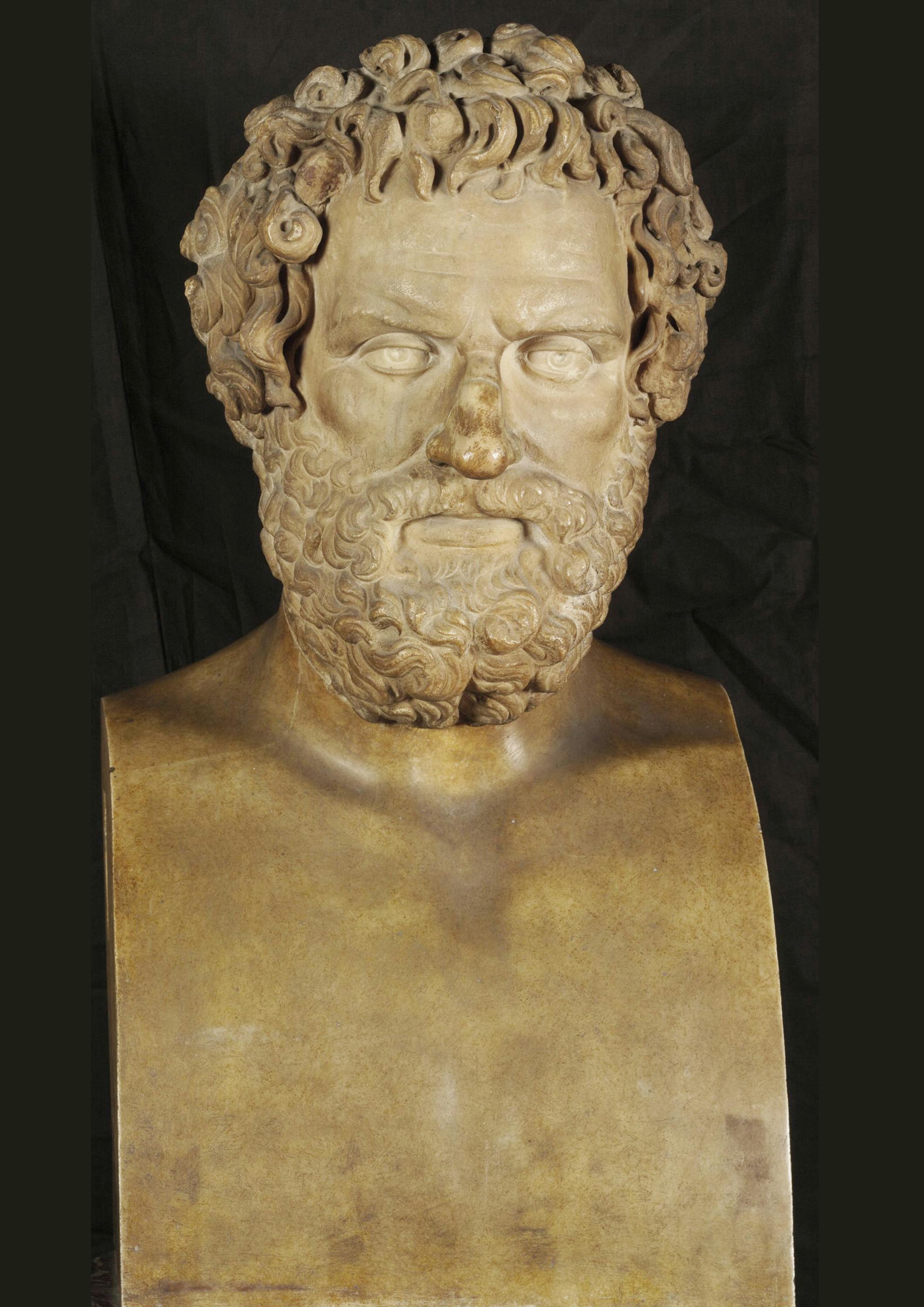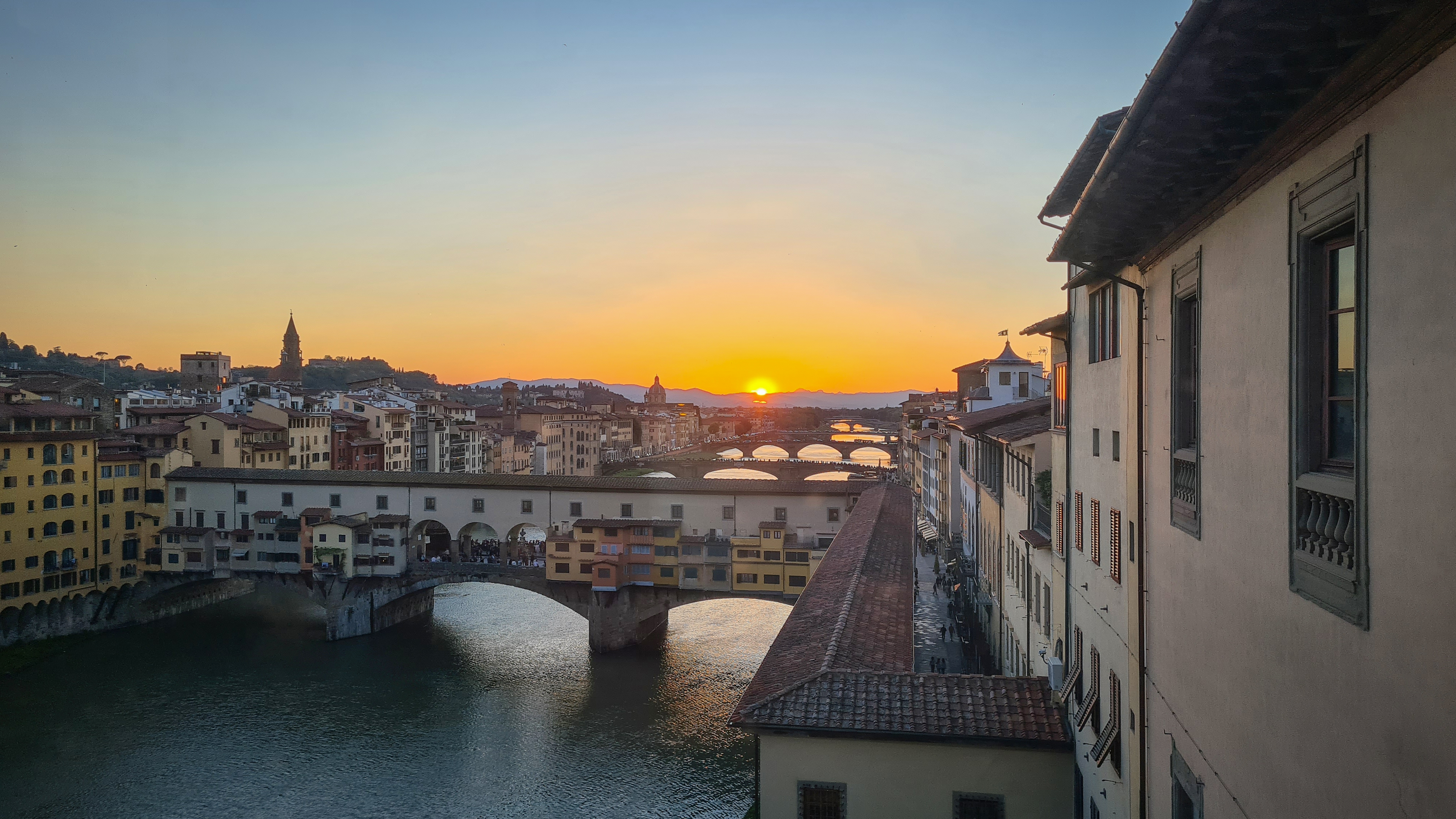Portrait of an intellectual on modern herma, so-called Sophocles
Roman Art
This head, which is original down to the neck, is mounted on a modern herma bearing the inscription SOPHOCLES on its right side. Apart from the herma, only the nose is the result of an integration.
The portrait depicts a man of advanced age, as evidenced by the hollowed face and the marked wrinkles on his forehead and on the sides of the nose. The wrinkled eyebrows, made with the use of a chisel, are in relief. They overshadow the small and narrow eyes, which are characterised by engraved iris and pupil and by the lacrimal duct made using the drill. Below the thick moustache, the full lips are tightly closed. The voluminous hair is moved by thick curly locks made with the drill, while on the back the locks are thicker and less in relief. The beard is compact and neat and its wavy locks are divided by a parting below the chin.
Since the end of the 19th century, several scholars have questioned the identity of the portrayed figure - alternatively identified as Solon, a poet or a philosopher - and the dating of this sculpture.
Today we know of eight replicas of this portrait, of which the Copenhagen and Petworth copies are considered to be the closest to the original due to their severe expression, while the head preserved in the Uffizi is the most accurate replica for what concerns the rendering of facial details.
It should be noted that the original head of the Florentine portrait must have been slightly turned to the right, as suggested by the slightly wider left side of the face compared to the right (optical correction), an aspect that is also present in the replicas preserved in the Capitoline Museums (Zanker 2016, 29, no. 6, replica 5), Malibu (Zanker 2016, 29, no. 6, replica 8) and New York.
The abundant use of the drill, the strong chiaroscuro, and the engraving of the pupils allow to date the work to the middle or late Antonine period (2nd century A.D.).
There is no information regarding the discovery of this work, but we know that it was mentioned for the first time in the Gallery inventory of 1704, according to which it was located in the Corridoio Grande (inv. 1704, no. 204). In 1825, the sculpture was moved to the Hall of Inscriptions together with the portraits of other illustrious men. Since 1945, it has been preserved in the storage room of the Cavalcavia of Palazzo Vecchio (Mansuelli 1961, 96), where it remained until 2014 when it was exhibited in the so-called Hall of Greek Portraits.
P. Zanker, Roman Portraits: Sculptures in Stone and Bronze in the Collection of the Metropolitan Museum of Art, pp. 28 – 30, New York, 2016; M. Rodinò, Ritratto di intellettuale su erma moderna, cd. Sofocle in Divina Simulacra. Capolavori di scultura classica della Galleria degli Uffizi, catalogo della mostra (Firenze, Gallerie degli Uffizi, 12 dicembre 2023 – 30 giugno 2024), a cura di F. Paolucci, pp. 98 – 99, Livorno, 2023, e bibliografia precedente

